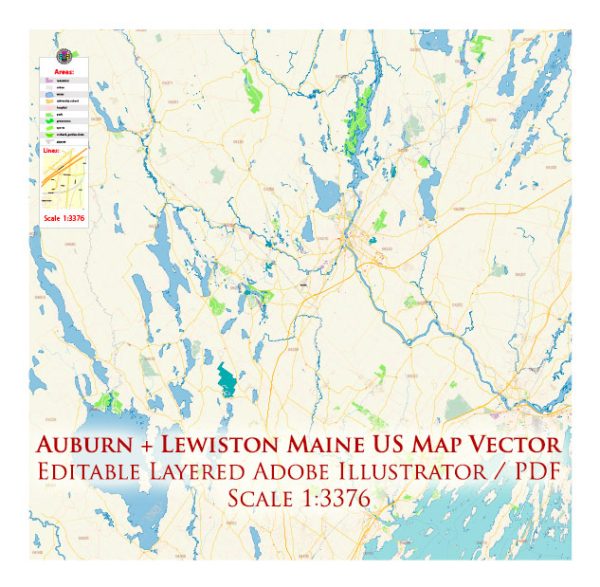Auburn and Lewiston, located in Androscoggin County, Maine, are neighboring cities that form the Twin Cities area. While they may not be widely known for iconic landmarks or skyscrapers, they do have some notable buildings and landmarks that reflect the area’s history and culture.
- Basilica of Saints Peter and Paul (Lewiston): This Roman Catholic church is a prominent landmark with stunning architecture. The basilica, completed in 1936, features twin spires and beautiful stained glass windows. It serves as a symbol of the area’s strong Franco-American heritage.
- Great Falls (Lewiston): The Great Falls on the Androscoggin River is a natural landmark. Though it may not be a man-made structure, it holds historical significance. The river and the falls played a crucial role in the industrial development of the area.
- Lewiston City Hall (Lewiston): Constructed in 1890, Lewiston City Hall is an impressive building with a clock tower. The architecture reflects the city’s historical importance and serves as a governmental center.
- Auburn Public Library (Auburn): The Auburn Public Library, established in 1883, is an architectural gem. Its design is reminiscent of the Richardsonian Romanesque style, and it stands as a testament to the city’s commitment to education and culture.
- Androscoggin Bank Colisée (Lewiston): Formerly known as the Central Maine Civic Center, this multi-purpose arena hosts a variety of events, including hockey games, concerts, and community gatherings. It has been a significant venue for entertainment and sports in the area.
- Thorncrag Bird Sanctuary (Lewiston): While not a building, Thorncrag is a natural landmark and one of the largest bird sanctuaries in the state. It offers hiking trails and panoramic views of the surrounding area.
- Auburn-Lewiston Municipal Airport (Auburn): The local airport serves the region and is an essential transportation hub. While not a famous landmark, it plays a vital role in connecting the area to the broader region.
These landmarks and buildings contribute to the historical and cultural identity of Auburn and Lewiston, showcasing the evolution of these twin cities over the years. Keep in mind that local development and community initiatives may introduce new landmarks or modify existing ones over time.



 Author: Kirill Shrayber, Ph.D.
Author: Kirill Shrayber, Ph.D.